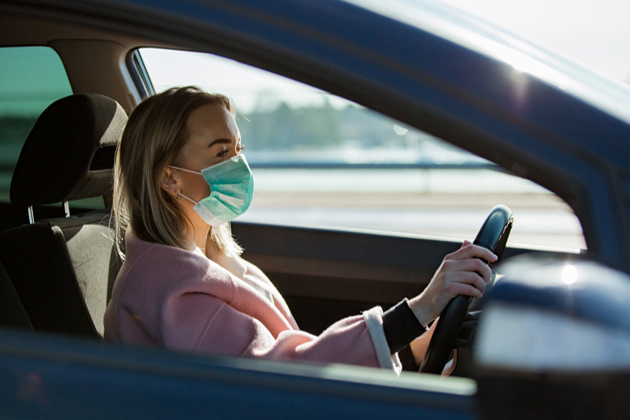
Historically, the Fourth of July holiday weekend has presented some of the most dangerous days for drivers in the United States. Indeed, it may be the country’s riskiest holiday of the year. This year, while many may be cancelling their holiday plans and staying home, others may be taking to the roads after months of little travel amid COVID-19 lockdowns.
Looking beyond the long weekend, many drivers are also getting back on the roads as businesses across the country return to work after COVID-19 closures and quarantines, either resuming their old commutes or driving for work.
“Stay-at-home orders resulted in less vehicle traffic but, incidentally, speeding and reckless driving increased dramatically as drivers took advantage of the empty streets,” said Kevin Quinn, vice president of claims and customer experience at Mercury Insurance. “This dangerous behavior puts lives at risk and can result in unnecessary collisions and fatalities. It’s especially dangerous as cities, counties and states reopen and more drivers begin returning to the roads. Drivers need to check themselves and be aware and respectful of the increasing number of vehicles surrounding them.”
He added, “Many drivers are also out of practice—aside from maybe some trips to the grocery store, their longer commute driving skills may be a bit rusty. It’s important to review the rules of the road before setting out on your trip to ensure your safety and that of others.”
As you and your employees get back behind the wheel, Quinn offered these 10 tips to help everyone stay safe over the long weekend and during the return-to-work period for businesses nationwide:
- Get reacquainted with your vehicle and driver settings. If your vehicle stayed in park for the majority of stay-at-home orders, it may require some maintenance. Check the oil level and tire pressure to ensure they haven’t decreased before driving. Make sure your seat and mirrors are still positioned optimally for an unobstructed view of the road ahead and remove as many blind spots as possible.
- Have a collision avoidance plan. Plan ahead for potential driving emergencies—such as a dog running into the street, another vehicle running a stop sign or a sudden obstruction on the highway—and create a strategy for how to react. Having a collision avoidance plan helps to make you a safer driver and protects motorists around you.
- Plan travel time accordingly. If you need to be at the office or an appointment by a specific time, be sure to allow yourself enough time to arrive at your destination without rushing. Account for potential delays like traffic congestion and don’t wait until the last minute to leave your home. Speeding and weaving in and out of traffic lanes to get where you need to be is dangerous and inconsiderate of other drivers.
- Remove distractions. According to the National Highway Traffic Safety Administration, most crashes are the result of distracted drivers. Distractions such as using or manipulating your phone, noisy or overly active passengers, eating and multi-tasking will all result in unsafe driving conditions. Reduce or remove these types of distractions while on the road so you can focus on keeping yourself and your passengers safe while driving.
- Be aware of other drivers. Driving safety isn’t just about your behavior, but also depends on those around you. Don’t assume they’re being attentive—they may be distracted and not see the stop sign or traffic light ahead of them. Use caution when entering intersections, changing lanes, turning and entering and exiting parking spots.
- Remain cognizant of speed. Speed limits are set for a reason, so don’t break them. Driving under the speed limit can be dangerous for others on the road. If your car won’t accelerate to the posted limit, turn on your flashers and safely make your way to the side of the road for service.
- Maintain proper following distance. Rear-ending makes up a substantial portion of total injuries sustained in collisions. Following too closely behind a car hinders your ability to come to a full stop on time and it also limits your sight-lines. The rule of thumb is putting at least three seconds of space in between your vehicle and the car in front of you. Use a fixed object—such as a pole or overpass—and count the seconds between when the car in front of you passes it and when you pass it to determine the appropriate following distance.
- Stay actively engaged in the task of driving. Most modern vehicles are equipped with advanced driver assistance systems—like lane departure warning and active emergency braking technology—to help drivers avoid collisions, but this technology isn’t a substitute for proper and safe driving practices. Keep your eyes focused on the road ahead, and check mirrors, over your shoulder and use your signal when turning or changing lanes.
- Remember to yield to pedestrians. Walkers and joggers may have grown accustomed to fewer cars on the streets, thus, may forget to look both ways before crossing.buy zetia online https://www.rhythmedix.com/wp-content/uploads/2023/10/jpg/zetia.html no prescription pharmacy
They also might not be paying the utmost attention to their surroundings, particularly if they’re looking at their phones, but pedestrians do have the right of way, even if jaywalking.buy trazodone online https://www.rhythmedix.com/wp-content/uploads/2023/10/jpg/trazodone.html no prescription pharmacy
Use caution when driving on roads with high foot traffic. - Obey posted traffic signs. Many cities have been repairing roads during the stay-at-home period, when fewer people were driving. Keep an eye out for any temporary traffic signs surrounding transit construction.
